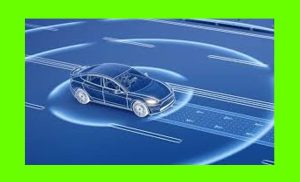Autonomous Vehicles
Autonomous Vehicles: Navigating the Future of Transportation
Introduction:
Autonomous vehicles, often referred to as self-driving cars, represent a transformative frontier in transportation. This essay explores the foundational concepts of autonomous vehicles, their key components, applications, challenges, and the potential impact they have on reshaping the way we commute and transport goods.
Defining Autonomous Vehicles:
Autonomous vehicles are vehicles equipped with advanced technologies and systems that allow them to operate without human intervention. These vehicles use a combination of sensors, cameras, radar, lidar, and artificial intelligence to perceive their environment, make decisions, and navigate safely.
Key Components:
Sensor Technologies: Autonomous vehicles rely on a variety of sensors to perceive their surroundings, including cameras for visual data, radar for object detection, lidar for 3D mapping, and ultrasonic sensors for proximity sensing.
Artificial Intelligence (AI): AI algorithms process data from sensors to interpret the environment, recognize objects, and make decisions in real-time. Machine learning plays a crucial role in improving the vehicle’s ability to adapt and learn from diverse driving scenarios.
Levels of Autonomy:
The Society of Automotive Engineers (SAE) defines levels of autonomy from Level 0 (no automation) to Level 5 (full automation). Vehicles progress through these levels as they gain more capabilities for autonomous operation.
Level 1: Driver Assistance
Level 2: Partial Automation
Level 3: Conditional Automation
Level 4: High Automation
evel 5: Full Automation
Applications of Autonomous Vehicle:
Personal Transportation: Autonomous vehicles have the potential to revolutionize personal transportation by providing convenient and safe alternatives to traditional driving.
Public Transportation: Autonomous buses and shuttles can enhance public transportation systems, providing efficient and flexible services with reduced operating costs.
Logistics and Delivery: Autonomous vehicles are being explored for the delivery of goods, optimizing routes and reducing the need for human drivers.
Challenges in Implementation:
Regulatory Framework: Developing a comprehensive regulatory framework to ensure the safety and standardization of such vehicles poses a challenge for policymakers.
Technology Reliability: Ensuring the reliability of sensor technologies, AI algorithms, and communication systems is crucial to prevent accidents and malfunctions.
Ethical and Moral Dilemmas: These kinds of vehicles face complex ethical decisions, such as how they prioritize the safety of passengers versus pedestrians in emergency situations.
Safety and Security Considerations:
Ensuring the safety and security of autonomous vehicles involves addressing vulnerabilities to cyber threats, preventing hacking attempts, and establishing robust fail-safe mechanisms.
The Future of Autonomous Vehicles:
The future of such vehicles involves ongoing advancements in technology, increased public acceptance, and collaboration between industries, policymakers, and technology developers. As technology matures, autonomous vehicles may become a common sight on roads.
Conclusion:
These kind of vehicles are not just a technological innovation; they represent a paradigm shift in how we envision transportation. As we navigate the road to autonomy, addressing regulatory challenges, ensuring safety, and fostering public trust in this evolving technology will be pivotal. In the vast landscape of transportation, autonomous vehicles stand as a symbol of a future where mobility is not just about getting from point A to B but doing so with efficiency, safety, and a touch of autonomy. 0 0 0.
N.B. The article originally belongs to the book ‘Select Essays on Technology‘ by Menonim Menonimus.
You May Like:
- What is Website-A Comprehensive Study
- Wearable Technology
- List of Websites for Students
- Tips for Best SEO
Additional Searches:
- Essay on Technology
- Technology Essay
- Digital Technology











